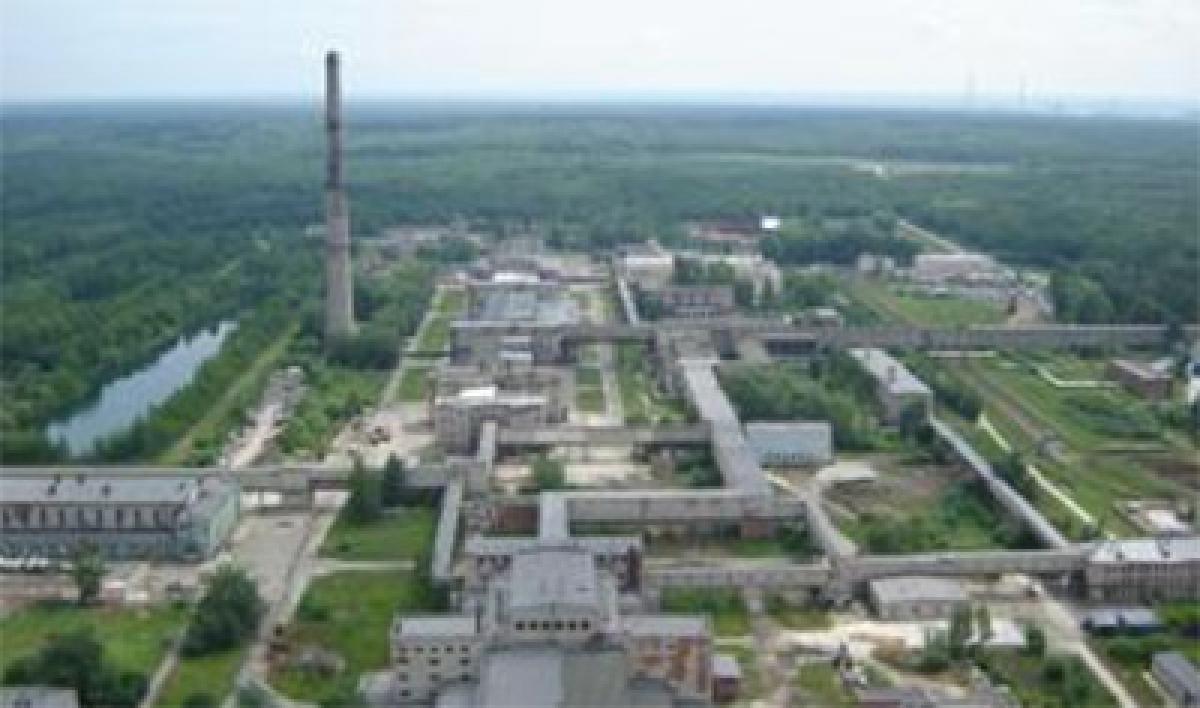Just In
Siberian Chemical Plant decommissions commercial uranium graphite reactor


Siberian Chemical Plant Decommissions Commercial Uranium Graphite Reactor. The Siberian Chemical Plant (SCP), a subsidiary of Rosatom\'s TVEL Fuel Company, has decommissioned a commercial uranium-graphite reactor for the first time in global history.
 The Siberian Chemical Plant (SCP), a subsidiary of Rosatom's TVEL Fuel Company, has decommissioned a commercial uranium-graphite reactor for the first time in global history. Russia's state-owned nuclear corporation has yet again proved that nuclear facilities can be operated and decommissioned safely.
The Siberian Chemical Plant (SCP), a subsidiary of Rosatom's TVEL Fuel Company, has decommissioned a commercial uranium-graphite reactor for the first time in global history. Russia's state-owned nuclear corporation has yet again proved that nuclear facilities can be operated and decommissioned safely.
It is EI-2, the first ever nuclear reactor that was used, apart from weapons-grade plutonium production, to generate electric power with the help of steam turbines. The reactor was started in 1958 and shut down in December 1990. To guarantee safe storage of the reactor for tens of thousands of years, SCP established a Pilot Decommissioning Center for uranium-graphite reactors. In association with the Russian Academy of Sciences, the center has developed a dedicated decommissioning technology.
In accord with nature
Natural materials are at the core of the new technology. For example, all reactor cavities are filled with a mix of natural clays. "The reactor is filled with clay under pressure to eliminate all empty spaces inside. We also pile clay on top of EI-2 to form a hill, which is then covered with inert materials – sand and crushed stone, There is no concrete. According to IAEA guidelines, the life cycle of concrete is 300 years while our site is intended for 10 thousand years of safe storage," says Andrei Izmestiev, General Director of the Pilot Decommissioning Center.
"Clay offers the most effective protection against radionuclides for two reasons," explains Mark Glinsky, First Deputy CEO at Gidrospetsgeologiya, a state-owned geotechnical engineering agency. "First, clay curbs radiation migration as it perfectly sorbs and poorly desorbs radionuclides. Second, clay is not permeable for water. Therefore, no groundwater will pass through the clay casing."
According to Mark Glinsky, filling clay under high pressure turns it into a monolith structure. "It is a very good protection. Its lifespan depends on how much clay we use. It is a material that suits perfectly for protective barriers, and estimates about its properties can be made with sufficient accuracy. A 10,000-year lifespan is based on theory, of course. We won't be able to verify it in practice. Clay is a natural material that appeared millions or even billions of years ago in the process of sedimentation in ancient oceans. Unlike concrete, it is not friable. Clay preserves its structure and, if compacted anew, recovers its isolating properties."
Glinsky added that he was confident about the replacement of concrete with clay, "In case of static loads (and loads are really static as the reactor is out of operation), the project concept is right – clay is a perfect protector provided that all factors have been taken into account. It is an excellent isolating material, even for radionuclides carried by groundwater."
Public trust
According to Andrei Izmestiev, General Director of the Pilot Decommissioning Center, all the major decommissioning operations have been completed. "We will finish the project two months ahead of the schedule. We are now working on a protective shield against weather impact. Acceptance by the government commission is scheduled for 25 September 2015," said Izmestiev.
Completion of the project will improve public confidence in the nuclear industry, believes SCP CEO Sergei Tochilin. "I think it is a useful effort. It will improve our global ranking. Along with building reliable nuclear reactors, we can decommission them and create safe conditions for living," Tochilin stressed at a press meeting in Seversk.
He reminded that open pools dedicated for the storage of liquid radioactive waste had been decommissioned. "Today, all storage sites are safe areas duly enclosed, sealed and controlled," Tochilin stressed and added that these efforts improved public trust. "Public confidence in government actions grows, and so does confidence in Rosatom."
The story of the Pilot Decommissioning Center will not end with the EI-2 reactor. The IAEA and the Organization for Economic Cooperation and Development Nuclear Energy Agency (OECD NEA) consider an opportunity to create an international pilot site at the Siberian Chemical Plant to develop irradiated graphite management technologies, according to Andrei Izmestiev, General Director of the SCP Pilot Decommissioning Center. "In October, there will be a meeting in Seversk to decide on the pilot site at SCP," he said.

© 2024 Hyderabad Media House Limited/The Hans India. All rights reserved. Powered by hocalwire.com






